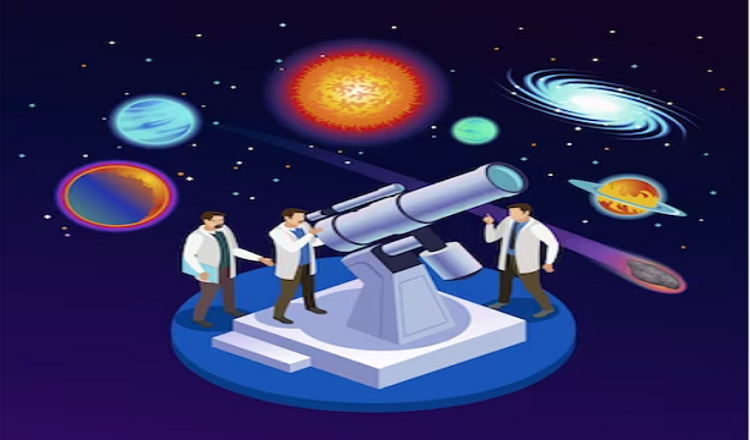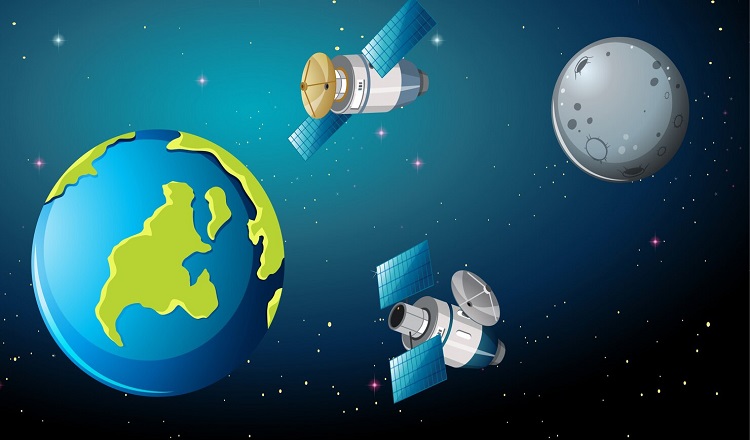Neil Armstrong famously said, “One small step for man, one giant leap for mankind.” The 20th-century space race not only produced ground-breaking discoveries but also paved the way for improvements across a range of businesses. Previously used exclusively to explore the wide unknown, space technology is today revolutionising numerous industries in ways that were previously unthinkable. Space technology has evolved into a crucial instrument for innovation and advancement across a variety of industries, including healthcare, transportation, and energy.
A wide variety of technologies and applications that are used on Earth and beyond are included in the field of space technology. Among the space technologies that have been adapted for use in various sectors are satellites, GPS, and communication systems. Satellites are used in agriculture, for instance, to monitor crops and evaluate soil conditions, resulting in better crop yields and higher-quality produce. GPS technology has revolutionised how we navigate in the world of transportation by enabling accurate route planning and real-time traffic information.
It is impossible to exaggerate the value of space technology in various industries. It has given us a fresh perspective on the world and given us the ability to overcome problems that were formerly regarded as insurmountable. We will examine how space technology is reshaping many US businesses in this blog, looking at the various uses and advantages that come with these developments. So fasten your seatbelts and prepare for an adventure as we explore the remarkable ways that space technology is transforming our world.
Technology from Space for Agriculture
Our approach to agriculture has been revolutionised by space technology. The use of satellites to monitor crops is one of the most famous uses of space technology in this area. Farmers can monitor soil moisture levels, evaluate the health of their crops, and even forecast yields using satellite photography. This enables improved decision-making, more effective resource management, and eventually higher crop yields.
There are several benefits to using space technology in agriculture. Farmers can more precisely estimate the amount of water and fertiliser crops require by using satellite images, which lowers costs and boosts productivity. Furthermore, satellite imaging can be used to pinpoint regions that are vulnerable to disease or pests, enabling farmers to take preventative measures before it is too late. Farmers can now more effectively prepare for weather-related threats like drought and flooding thanks to technology.
A number of businesses already use space technology in agriculture. Farmers can utilise satellite imagery from Planet Labs, for instance, to monitor crop health and evaluate field conditions. Another business, CropX, uses satellite data to give farmers information about the moisture levels of the soil, enabling more precise watering. We may anticipate much more ground-breaking agricultural applications as space technology advances further.
Technology from Space for Transportation
One of the most important ways that space technology is used in transportation is through GPS. GPS enables both accurate road and highway navigation for drivers and fleet management for transportation corporations. The use of GPS has changed how we think about transport, enabling quicker and more reliable delivery times as well as increased road safety.
There are several benefits of using space technology in transportation. GPS technology enables accurate route planning and real-time traffic updates, which lowers fuel consumption and expenses for transportation businesses. GPS tracking is an essential tool for logistics organisations because it may also reduce theft and loss of expensive products. Additionally, the use of GPS in transportation has increased road safety by lowering the amount of collisions brought on by human mistake.
In the USA, a number of businesses are using space technology for transportation. For instance, Uber and Lyft employ GPS technology to follow its drivers and customers in real-time, assuring safe and effective journeys. Additionally, logistics firms like FedEx and UPS employ GPS technology to monitor and improve the routes of their delivery vehicles. Future innovations in the subject of transportation can be expected as space technology continues to progress.
Space Communication Technology
One of the most significant uses of space technology in the communication industry is communication satellites. These satellites are in orbit around the Earth and offer a variety of communication services, including telephone, internet, and television broadcasts. In places with a lack of or inefficient traditional communication infrastructure, communication satellites are very helpful.
There are several benefits to using space technology for communication. Global connectivity is made possible by communication satellites, which allow for dependable and secure communication over large distances. Additionally, satellite communication can reach remote and inaccessible locations and is not constrained by geographic boundaries. When conventional communication infrastructure is lost or damaged during natural disasters, this technology has also made it possible for emergency personnel to communicate.
Many American businesses use space technology for communication. For instance, businesses like DirecTV and Dish Network offer their consumers television services by way of communication satellites. In addition, SpaceX intends to launch the Starlink constellation of satellites, which promises to deliver universal internet connectivity. We can anticipate even more cutting-edge communication uses in the future as space technology continues to advance.
Technology from Space for Healthcare
Two prominent uses of space technology in the healthcare sector are telemedicine and remote healthcare. Through the use of video conferencing and other communication tools, telemedicine allows patients to consult with medical specialists from a distance. On the other side, remote healthcare uses space-based technologies, including wearable health monitoring equipment, to remotely monitor patients’ health.
There are several benefits to using space technology in healthcare. Healthcare has become more accessible because to telemedicine and remote care, especially in rural and distant places. By eliminating the need for in-person consultations, this technology has also decreased the risk of disease transmission and allowed patients to obtain treatment without having to leave their homes. Additionally, remote health monitoring can give medical experts ongoing data, enabling the early detection and prevention of health problems.
Several US businesses are utilising space technology in the medical field. For instance, businesses like Philips and Medtronic provide wearable health monitoring gadgets that send information to medical specialists using satellite technology. Additionally, patients can consult with medical specialists remotely thanks to telemedicine companies like Teladoc and Doctor on Demand. We may anticipate even more cutting-edge uses in the realm of healthcare in the future as space technology continues to advance.
Energy Technology from Space
An important use of space technology in the sphere of energy is solar energy technology. Modern solar panels that effectively catch and convert sunlight into electricity have been made possible by space technology. Additionally, solar energy from space can be captured and transmitted to Earth by space-based solar power systems, creating a potentially limitless supply of clean energy.
Energy-related benefits of space technology are substantial. Solar energy is a clean, renewable source of power that has no impact on global warming or greenhouse gas emissions. Additionally, remote and inaccessible locations can receive electricity from space-based solar power systems, facilitating sustainable development and lowering reliance on fossil fuels.
Numerous American businesses are utilising space technology for energy. For instance, the business SolFocus creates cutting-edge solar panels employing space technology. Additionally, businesses like Northrop Grumman and Lockheed Martin are creating solar power systems that can be used in space. Future applications in the realm of energy are likely to be even more cutting-edge as space technology advances.
Technology in Space and Environment
An important use of space technology is for environmental monitoring and research. The environment of the Earth, including weather patterns, the quality of the air and water, and changes in land use, can be studied using satellites fitted with a variety of sensors and equipment. With the use of this technology, researchers and decision-makers can safeguard and manage the environment.
There are several environmental benefits of space technology. Global coverage from space-based environmental monitoring enables researchers to examine the ecology of the entire planet. Additionally, this technology can assist lessen the effects of natural disasters by providing early warning. Additionally, environmental factors may now be measured with greater accuracy and precision thanks to space technology, leading to a more thorough understanding of the Earth’s ecosystem.
Several American businesses are using space technology to monitor the environment. For instance, a number of Earth-observing satellites run by NASA and NOAA give information on weather patterns and climate change. Additionally, organisations like Planet Labs track changes in land usage and deforestation using satellite images. We may anticipate even more cutting-edge applications in the realm of environmental monitoring and management in the future as space technology continues to advance.
Conclusion
In conclusion, space technology is revolutionising a variety of American businesses, from healthcare and transportation to agriculture and agriculture. These sectors have been able to develop into ones that are more effective, efficient, and sustainable thanks to the usage of satellites, communication technology, and solar energy technology, among other things.
Future industrial revolutions due to space technology have much more potential, as we can see. New developments in industry, resource management, and perhaps human habitation of other planets could result from advances in space travel and study. Unlocking these possibilities and building a more sustainable and wealthy future for humanity will depend heavily on ongoing research and development in space technology.
In summary, space technology has already shown to be a game-changer for various industries, and there is enormous potential for it to continue to expand and improve. Recognising the significance of ongoing investments in space technology is crucial for fostering innovation and development across a range of businesses in the USA and abroad. There are countless possibilities, and we ought to be enthusiastic about what lies ahead.
Read More You May Like:











